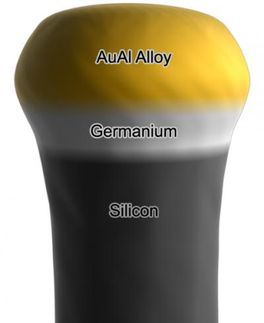Helium Isotopes Point to New Sources of Geothermal Energy
Advertisement
In a survey of the northern Basin and Range province of the western United States, geochemists Mack Kennedy of the Department of Energy's Lawrence Berkeley National Laboratory and Matthijs van Soest of Arizona State University have discovered a new tool for identifying potential geothermal energy resources.
Currently, most developed geothermal energy comes from regions of volcanic activity, such as The Geysers in Northern California. The potential resources identified by Kennedy and van Soest arise not from volcanism but from the flow of surface fluids through deep fractures that penetrate the earth's lower crust, in regions far from current or recent volcanic activity. The researchers report their findings in Science.
"A good geothermal energy source has three basic requirements: a high thermal gradient - which means accessible hot rock - plus a rechargeable reservoir fluid, usually water, and finally, deep permeable pathways for the fluid to circulate through the hot rock," says Kennedy, a staff scientist in Berkeley Lab's Earth Sciences Division. "We believe we have found a way to map and quantify zones of permeability deep in the lower crust that result not from volcanic activity but from tectonic activity, the movement of pieces of the Earth's crust."
Kennedy and van Soest made their discovery by comparing the ratios of helium isotopes in samples gathered from wells, surface springs, and vents across the northern Basin and Range. Helium-three, whose nucleus has just one neutron, is made only in stars, and Earth's mantle retains a high proportion of primordial helium-three (compared to the minuscule amount found in air) left over from the formation of the solar system. Earth's crust, on the other hand, is rich in radioactive elements like uranium and thorium that decay by emitting alpha particles, which are helium-four nuclei. Thus a high ratio of helium-three to helium-four in a fluid sample indicates that much of the fluid came from the mantle.
High helium ratios are common in active volcanic regions, where mantle fluids intrude through the ductile boundary of the lower crust. But when Kennedy and van Soest found high ratios in places far from volcanism, they knew that mantle fluids must be penetrating the ductile boundary by other means.
"We have never seen such a clear correlation of surface geochemical signals with tectonic activity, nor have we ever been able to quantify deep permeability from surface measurements of any kind," says Kennedy. The samples they collected on the surface gave the researchers a window into the structure of the rocks far below, with no need to drill.
Original publication: B. Mack Kennedy and Matthijs C. van Soest; "Flow of Mantle Fluids Through the Ductile Lower Crust: Helium Isotope Trends."; Science 2007.





























































